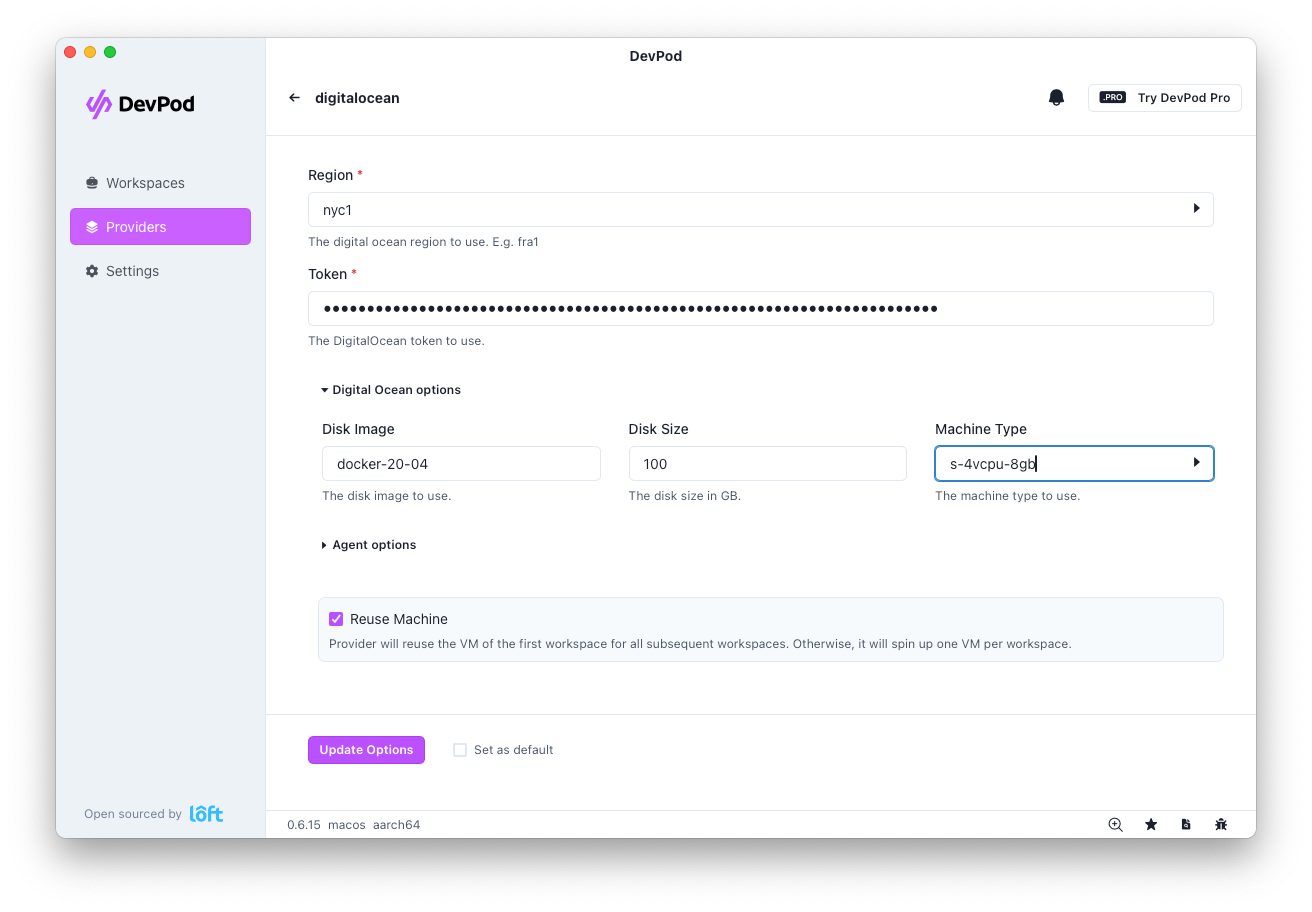Remote Development Using Digital Ocean: Devpod
In the previous post, Remote Development Using Digital Ocean: Remote SSH, I outlined how to set up an existing devcontainer github repo to use a Digital Ocean Droplet.
Now I'm going to do the same, but using devpod, an opensource CodeSpaces like development environment.
First, you'll need to install devpod and get a personal access token for Digital Ocean.
Remote dev using devpod
From the devpod app add the Digital Ocean provider, add the personal access token, select a region near you (nyc1), set the disksize to fit you development environment and select a machine type.

You can start the devpod from the command line and reference your devcontainer enabled github repo, I'm using https://github.com/markcallen/devcontainer-typescript-example
devpod up --id devcontainer-typescript-example --provider digitalocean --ide vscode git@github.com:markcallen/devcontainer-typescript-example.gitThis will open up VSCode with devcontainer running on the server.

You can see the running server using doctl
doctl compute droplet listYou can stop and start the devpod and the droplet as required. Using the command line or the devpod app.
This article explores how to streamline your development workflow using devpod on a Digital Ocean droplet, especially from a MacBook Pro using Visual Studio Code (VSCode). It covers the benefits of remote development, such as consistent environments and reduced local resource usage. It walks through setting up a droplet, connecting with DevPod, and working inside a devcontainer remotely. Perfect for developers who want a lightweight local setup but full-featured remote dev power.